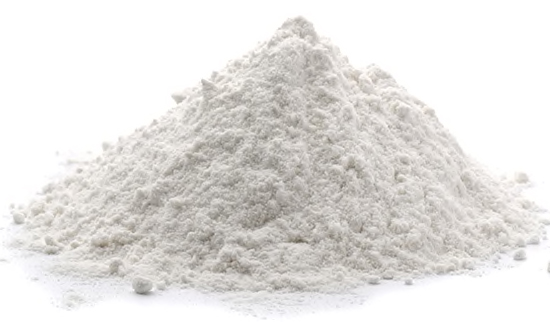Blog
Sodium Carbonate Formula: A Comprehensive Guide
The sodium carbonate formula is a crucial component in various industries, making it a topic worth exploring. This article will dive into the details of the sodium carbonate formula, including its composition, structure, and applications.
What is Sodium Carbonate?
Sodium carbonate, commonly known as soda ash or washing soda, is a chemical compound with the formula Na2CO3. It appears as a white, odorless powder and is highly soluble in water. Sodium carbonate plays a significant role in the manufacturing and cleaning industries, among others.

The Composition of Sodium Carbonate Formula
The sodium carbonate formula consists of two sodium ions (Na⁺), one carbon atom (C), and three oxygen atoms (O), resulting in the molecular formula Na₂CO₃. This composition makes sodium carbonate a salt of carbonic acid.
Structure of Sodium Carbonate Formula
The structure of sodium carbonate formula is ionic, meaning it consists of positively charged sodium ions (Na+) and negatively charged carbonate ions (CO3^2-). The bonding within the sodium carbonate formula is strong due to the electrostatic forces between the ions.
Common Uses of Sodium Carbonate
Understanding the sodium carbonate formula is essential to comprehend its wide range of applications. Sodium carbonate is used in:
- Glass Manufacturing: It is a key ingredient in the production of glass. It helps lower the melting point of silica, making it easier to shape and form glass products.
- Water Treatment: The process softens water by removing calcium and magnesium ions, making the water more suitable for domestic and industrial use
- Detergents and Cleaning Agents: It is a vital component in many cleaning products. It helps break down stains and grease, making it a popular choice for household and industrial cleaning agents.
- Paper and Pulp Industry: In the paper industry, It is used in the process of pulping wood to produce paper. It helps separate the lignin from the cellulose fibers, making the wood easier to process.
- Food Industry: It is also used as a food additive, known as E500. It acts as a leavening agent in baking and is used in the production of some types of pasta and noodles.
The Importance of Sodium Carbonate in Everyday Life
The sodium carbonate formula is not just important in industrial applications; it also plays a significant role in everyday life. Furthermore, while it is crucial for manufacturing processes, it also contributes to household cleaning and water softening. Consequently, its versatility makes it valuable both in professional settings and in daily routines.. From the glass in your windows to the detergent in your laundry, sodium carbonate is a part of many products you use daily.
Health and Safety Considerations of Sodium Carbonate
While the sodium carbonate is useful in many applications, it’s important to handle it with care. Sodium carbonate can be an irritant to the skin and eyes, and inhaling its dust can cause respiratory issues. Always use protective gear when handling products containing sodium carbonate.
Environmental Impact of Sodium Carbonate
The production and use of the sodium carbonate have environmental implications. Its production can lead to the release of carbon dioxide, a greenhouse gas. However, sodium carbonate is also used in processes that help reduce pollutants in the environment, such as in water treatment plants.
Alternatives to Sodium Carbonate
Although people widely use the sodium carbonate formula, several alternatives exist depending on the application. For instance, sodium bicarbonate (baking soda) serves as a milder alternative in cleaning products. Moreover, while sodium carbonate is effective for heavy-duty cleaning, sodium bicarbonate is often preferred for tasks requiring a gentler approach.
Understanding the Role of Sodium Carbonate in Chemistry
In chemistry, the sodium carbonate is used as a standard reagent in acid-base titrations. Its ability to react with acids to produce carbon dioxide makes it an essential compound in many laboratory processes.
Future Applications of Sodium Carbonate
Research continues into new uses for the sodium carbonate . Innovations in materials science and environmental engineering may lead to new applications for this versatile compound.
Conclusion
The sodium carbonate is a vital chemical compound with a broad range of applications in industries and everyday life. Its composition, structure, and uses are integral to understanding how this compound fits into various processes, from manufacturing to household cleaning.
FAQS
What is sodium carbonate used for?
Various industries use sodium carbonate in different applications:
- Glass Manufacturing: It is a key ingredient in glass production, helping to lower the melting point of silica.
- Water Treatment: Sodium carbonate softens water by removing calcium and magnesium ions.
- Cleaning Products: It is a common component in detergents and cleaning agents, helping to break down grease and stains.
- Paper and Pulp Industry: It aids in the pulping process, making wood easier to convert into paper.
- Food Industry: Sodium carbonate, also known as E500, serves as a food additive. Specifically, it acts as a leavening agent in baking. Additionally, it helps enhance the texture and volume of baked goods..
Is sodium carbonate just baking soda?
Sodium carbonate is not the same as baking soda.People commonly know sodium carbonate, with the chemical formula Na₂CO₃, as soda ash or washing soda. In contrast, baking soda is sodium bicarbonate, with the chemical formula NaHCO₃. Although both compounds are related and used for cleaning, they differ significantly in their chemical properties and applications.
What is sodium carbonate as a formula?
Sodium carbonate has the chemical Na2CO3. This formula represents its composition of two sodium ions (Na+), one carbon atom (C), and three oxygen atoms (O3). Sodium carbonate is an ionic compound that many use in various industrial and household applications.
What are the natural sources of sodium carbonate?
Sodium carbonate can be found naturally in several sources:
- Trona: Trona is a mineral that contains a mixture of sodium carbonate, sodium bicarbonate, and water. It is one of the primary sources of natural sodium carbonate.
- Natron: Natron is a naturally occurring mixture of sodium carbonate decahydrate and around 17% sodium bicarbonate, historically used in mummification processes.
- Soda Lakes: These are alkaline lakes rich in sodium carbonate and other salts, typically found in arid regions. Soda lakes are a natural source of sodium carbonate, extracted through evaporation processes.
